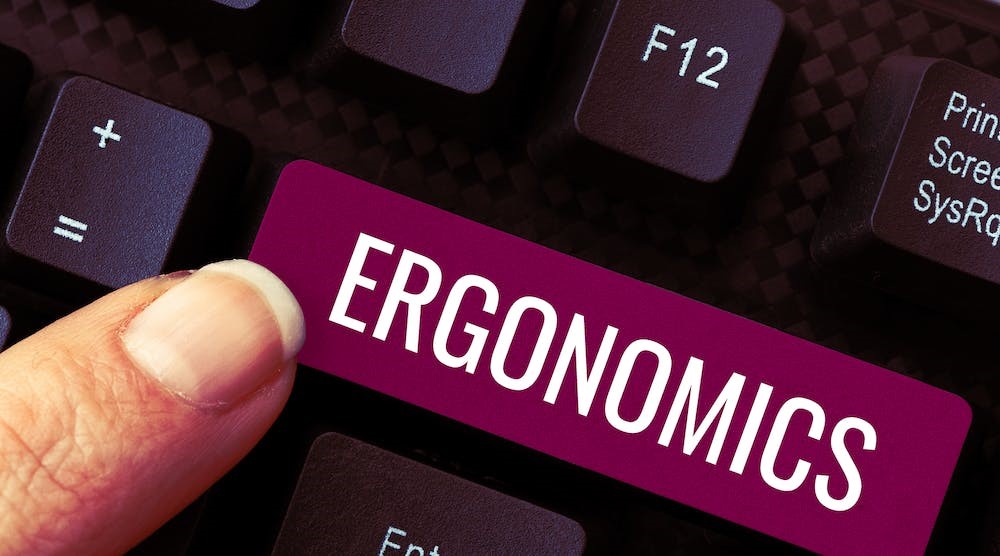A More Efficient Approach to Overexertion Injuries
Keeping employees safe and healthy at work is the foundation of our profession. When someone is injured at work, the impact may create a ripple effect on their life. It can be difficult to quantify or understand the impact of an injury on workplace culture and on the injured person’s life outside of work.
Perhaps they can no longer do the things they love to do outside of work. Maybe they can no longer perform their job as well as they used to. It’s quite possible that a workplace injury can put an employee’s life on hold while they heal, recover and try to bounce back. Sadly, injuries sometimes have permanent ramifications.
In 2021, more than 2.6 million recordable injuries were reported by private industry in the United States alone. Nearly a third of those were due to overexertion. Manual ergonomic assessments are our traditional tool to reduce overexertion injuries. These are, unfortunately, time consuming and limited in scope. The inherent limitations make injury prevention challenging and cost prohibitive to deploy at scale
Thankfully, technology has advanced in the coaching and assessment realms to the extent that new horizons for safety improvement are within reach.
The Problem with Traditional Ergonomic Assessments
When was the last time you had someone closely watch the work you were doing? What if they were taking notes on a tablet, making measurements of your movements and even taking photos or videos of your work? Do you think that you might try a bit harder or do things “the right way?”
Let’s say we conduct an ergonomic assessment on the first shift operator who happens to be a 5’10” male. Our calculations and hazard assessment is based on his interaction with the workstation, tools and process. What if the second shift operator is a 5’2” female? How might the operation present different risks for these two individuals?
These two basic illustrations highlight some of the challenges that we have faced since the beginnings of our profession:
- How might the risks change if we used a bigger data set instead of a moment in time?
- How might we efficiently understand the way multiple employees within a job role are performing the tasks?
Up until now, the best solutions to these challenges require significant time and effort. This means that ergonomic assessments are cost prohibitive for most organizations to leverage at scale.
But what if there’s another way?
Technology as a Tool for Proactive Injury Prevention
One new solution harnesses artificial intelligence (AI) to identify and quantify ergonomic risks in near real time. It automates measurement of an employee’s movements, the frequency at which they occur and identifies hazards exceeding preset thresholds. Imagine a visual, second-by-second angle of movement evaluation without having to use a protractor or make an educated guess. Videos from app-based AI technology allow safety professionals to gather big picture data over a longer period of time.
This solution enables safety professionals to scale their efforts across multiple facilities and locations without requiring as much travel and time away from home. We can cost-effectively collect ergonomic data from a group of employees for two weeks. We can also easily assess different employees performing the same job. Once this data is collected, it can be used in other ways as well—identifying trainers, best practices and improving standards of work.
What about Overexertion Injuries?
Imagine having an athletic trainer at an employee’s side coaching them into better body mechanics consistently over the course of several weeks. Do you think they would learn safer ways to perform their job duties?
While this type of on-the-job coaching might be an ideal way to reduce injuries, it is not a feasible solution for most companies to deploy at scale. There is no substitute for human interaction, but wearable devices are a game changer in this space! They can measure movements and provide real-time feedback to employees when high-risk movements such as bending, twisting, overhead reaching, or open arm push and pull are performed.
For safety professionals, the data collected from wearable devices provides a great opportunity to make our interactions with employees and supervisors more effective by the insights it can provide. A dashboard displays data for each employee wearing a device. Employees and managers can view the frequency of each type of hazard, where these hazards are happening (e.g., department, job roles) and pinpoint quickly where the risks of injuries are the greatest.
The Root Cause
While technology is opening new horizons of possibility to improve the safety of our operations at greater scale and lower cost, it is, ultimately, just another tool in the safety arsenal. Technology alone is not going to solve problems. People need to identify and address the root cause of the problem. We all have a role to play, from safety professionals and managers to employees and executives with the power to approve spending and investment in engineering controls.
There is only so much time in a day, and safety professionals never have a shortage of priorities. The use of technology can be invaluable, making ergonomic assessments much less time-consuming, more interactive with employees and truly a proactive measure.
Envision a future where we routinely improve culture and employee perception by giving employees the power to change the way they work for the better. How might a more collaborative approach impact morale and retention? Well, that’s a conversation for next time!



